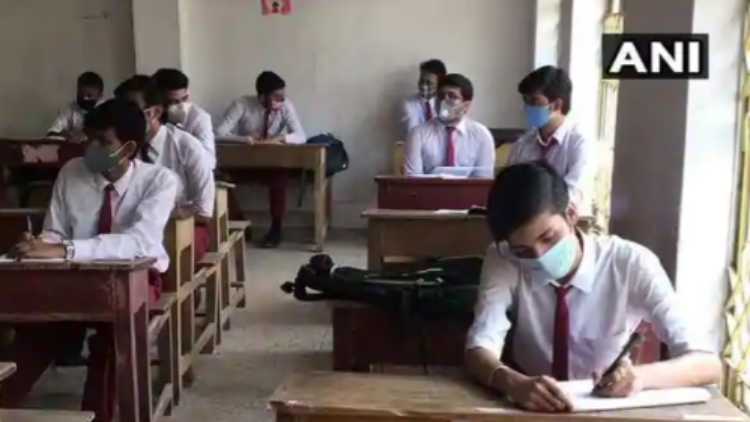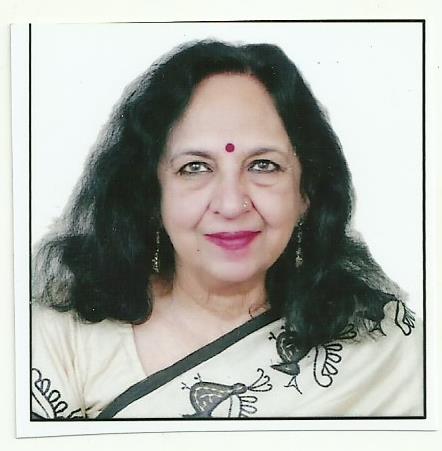
 Kavita A. Sharma
Kavita A. Sharma
A crisis is too good an opportunity to waste. The Indian examination system has been criticised for its emphasis on rote learning from the time of Woods Dispatch in 1854. Subsequently, in independent India, several commissions and committees have consistently recommended the urgent need to reform the evaluation system. Some tinkering has been done, but by and large, rote learning, dominates.
Now, the Covid-19 pandemic has left us with no alternative but to find a mode of evaluation other than the “Board” examinations (generally referring to class 10 and 12 examinations conducted by the CBSE and ICSC). Online exams are not feasible because the digital divide is palpable. Besides, there is no connectivity in many areas of the country. In any case, not all students have the resources to take online exams. Hence, an alternative mode of evaluation has to be found.
Laments are being heard, including from Principals, that good students will suffer; that even if online exams were to be held the marking would be subjective; that it is impossible to evolve objective criteria, which will be equitable for all categories of students. It is also being made out that not having the Board exams will be detrimental to the students in their pursuit of higher education as most universities and colleges admit students to undergraduate courses on the basis of marks attained in the exams.
A Flawed System
This process of thinking reveals a mindset that a one-time standardized mass examination is the only mode of equitable, objective evaluation that could separate the wheat from the chaff. However, few realize that the Class 12 Board examinations on the basis of which students’ future career is being charted out, is one of the most flawed, inequitable, and unfair modes of evaluation. There are several reasons for this.
Diversity among students
There is great diversity among students that appear for the boards. In several parts of rural India, students attend schools that lack even the most basic facilities of toilets and drinking water. For them, laboratories, computers, and libraries are only things they can dream of. They are expected to compete with students from elite schools in metropolitan towns with all the physical and academic resources at their command.
Disparitities
Even within the towns there is a great discrepancy between schools ranging from government schools, to low-fee charging private schools, to unaided elite schools. In addition to the much greater resources than other schools, the elite private schools are able to give their students wide exposure through extracurricular and co-curricular activities. Many have instituted exchange programs even with schools from other countries.
Social Environment
Among other deterrent factors is the social environment. The education level of the parents, their occupation, where they live, the size of the family, and the resources that the family can spare for the education of their children, all have an impact on the kind of education they can provide. Many students are first-generation learners whose parents cannot help them with their schoolwork and neither can they afford outside help. Social stigmas and prejudice should back many students, and these are more pronounced in small towns and rural areas. These phenomena get even more exaggerated for girls.
How fair is a one-time assessment?
How fair is it to the student that his or her future career is decided on the study for, and the results of, a one-time examination? There can be so many factors that are sure to affect the performance in an examination on a particular day —ill-health, ongoing upheaval in the family, stress, or even something as simple as traffic issues that cause delay, in reaching the examination centre. The rhythm of the mind is broken and that negatively impacts the performance in the examination. In any case, the fact that almost everything depends on the result of the one-time three-hour examination leads to at least two unwelcome outcomes. Parents load the children with private tuitions and students themselves experience inordinately high-levels of stress.
Most often, as the studies for the class 12 spiral at a frenetic pace, children are compelled to take tuition for almost every subject. What adds to their conundrum is that apart from Boards, they have to simultaneously prepare for entrance examinations to professional courses. In the National Education Policy 2020, entrance exams have been proposed for admission to regular universities as well. This is bound to add to the stress levels unless multiple factors are taken into cognizance for admission to colleges, the result of the entrance exam being just one of them.
The one-time decisive exam format has led many mental health issues among students. The need for counseling and even of psychiatrists has become commonplace because the students are unable to cope. The stress manifests in pre-result and post-result depression among students sometimes unfortunately even leading to suicides. Parents unwittingly add to psychological and emotional burden by treating the Board results as a matter of family prestige. When the marks attained by their child are not up to expectation, parents tend to make unfair comparisons with others and when talking to neighbours and members of family make false claims about the marks that their child has received. Even before the examinations, pathological situations prevail in many homes. Sports and extracurricular activities are banned. No visitors are allowed and the attendance at religious places increases. Truly we have robbed our children of their childhood.
Inequity of the Boards
Inequity of the boards is compounded by the multiple boards that exist in the country. Apart from the national boards such as, CBSE and ICSE, almost every union territory and state, has its own board that conducts class 10 and class 12examinations. Besides, CBSE itself has several regional centres, which take care of the marking of scripts in their region. Obviously, the marking is bound to be uneven and no statistical or any other tool is used to ensure parity between the different boards. The marks of ICSE and CBSE are also considered at par. But the CBSE has been unrealistically awarding hundred percent in almost all subjects, including the humanities and social sciences. This has set off an unhealthy competition between different Boards as no system wants its students to be at a disadvantage in admission to prestigious universities such as Delhi University that admit students on the basis of marks obtained in Class 12.This policy has made the Boards, the butt of jokes because such marks are obviously ridiculous.
The result is that cut-offs have soared to 100 per cent and at least in the perceived prestigious colleges, the last list may stop at 97 or 98 per cent. This leaves the students extremely disheartened because despite having worked very hard and got very high marks, they are unable to get the subject or the college of their choice. It is a sad commentary on the state of our education. The state universities have to a certain extent overcome the problem of admissions by reserving up to 85 per cent of seats in colleges, including professional colleges, for students of their own states. This has several repercussions for the quality of education that is imparted. There is evidently something undesirable not only in such an evaluation system, but in the education system as a whole.
Something certainly needs to be done. Some suggestion:
Find a method to ensure parity between the results of different Boards.
It might be better to work in percentiles rather than percentages for the purpose of admission to colleges, which will, to some extent, alleviate the menace of inordinately high marks.
Multiple factors need to be taken into consideration at the time of admission. These could consist of the results of classes X, XI and XII, together with marks of the term evaluations and internal assessment in all the three years. This will have the added advantage of toning up the system. It could be argued that schools might be tempted to give inordinately high marks in internal assessment, term examinations and in class 11. However, there are tools available to moderate results and bring about parity.
The entrance exam results, as suggested by the National Policy on Education (NPE) need to be factored in. The weightage to be given to each factor can be decided in consultation between the centre, the states and the union territories. Multiple factors will ensure that there is no single determining one and can result in a more balanced admission process. At the same time, it will certainly lessen student and parental stress. Multiple factors also mean multiple opportunities to improve performance. Examinations are a process of accrediting the student. While this is essential, it is equally vital to accredit schools on well-defined parameters covering at least physical and academic infrastructure, innovations attempted, and pedagogy. This will highlight the odds that a large section of students in various institutions in different parts of the country struggle against. Focused efforts can then be made to rectify them. Punjab this year, seems to have shown the way.
(Dr. Kavita A. Sharma is the former President of South Asian University)
